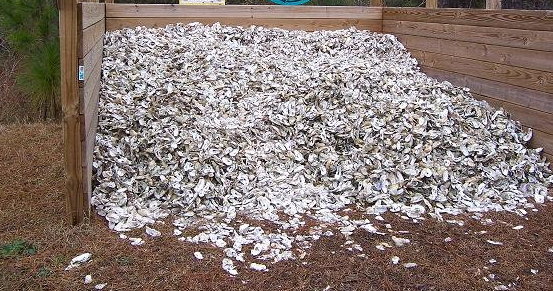
Recycling oyster shells provides S.C. Department of Natural Resources an opportunity to refurbish shellfish grounds with local shells for new generations of oysters to grow.
This time of the year, when oyster roasts are plentiful, the S.C. Department of Natural Resources (DNR) reminds the public that recycling oyster shells helps to enhance harvestable public shellfish grounds. Every shell recycled is replanted back into the estuarine environment, replenishing and helping to sustain the oyster resource.
Replanting shells during the warmer water seasons is part of the cycle for maintaining the resource by providing a substrate for oyster spat to attach. Oysters are also important to the marine environment, serving as ecosystem engineers and fish habitat.
DNR maintains 19 coastal recycling drop-off locations, spanning from Murrells Inlet south to Hilton Head where the public can recycle their shells. For detailed maps and directions to recycling drop-off locations, visit http://saltwaterfishing.sc.gov/oyster.html, or call
(843) 953-9854.
DNR’s Shell Recycling and Restoration Program coordinators will arrange to pick-up large quantities of recycled shells, 20 bushels or greater, following large oyster roasts.
With greater demand for suitable oyster shells to replant along coastal shellfish grounds, DNR is appreciative of all shells that are recycled. When the quantity of shells needed to replant fall short of the amount of shells that are recycled, DNR must purchase shells from other areas. With an increase in the demand for oyster shells ranging from landscaping practices to other states’ recycling and restoration programs, they are increasingly becoming more difficult to obtain.
Last year, more than 29,000 bushels of shells were purchased with Saltwater Recreational Fishing License funds for replanting harvestable public shellfish beds. Only after non-native shells have been cleaned and quarantined, to ensure that non-native vectors are not introduced into local waters, are they then able to be replanted.
DNR applauds the help of local catering companies for their efforts to recycle shells following oyster roasts. Andy Jennings, DNR’s Shell Recycling and Restoration Program coordinator, said: “Without their reliable support, we would have to purchase more shells from other areas. These conservation-minded caterers have contributed greatly to our program and we appreciate their determination and understanding of the importance to recycle shells after their events.”
Contributions from Jimmie Haygood with Tidewater Catering, Bubba Simmons with Simmons Seafood, and Jamie Westendorff with Charleston Outdoor Catering have helped bolster the quantity of recycled shells that DNR’s Shell Recycling and Restoration Program receives locally.
Bushels of oyster shells that have been recycled in South Carolina during the winter seasons: 2006 to 2007: 13,581
Bushels of oyster shells that have been replanted along public shellfish grounds: 2006 to 2007: 49,142
For more information about DNR and the shellfish grounds refurbishing project, visit www.dnr.sc.gov.



Be the first to comment